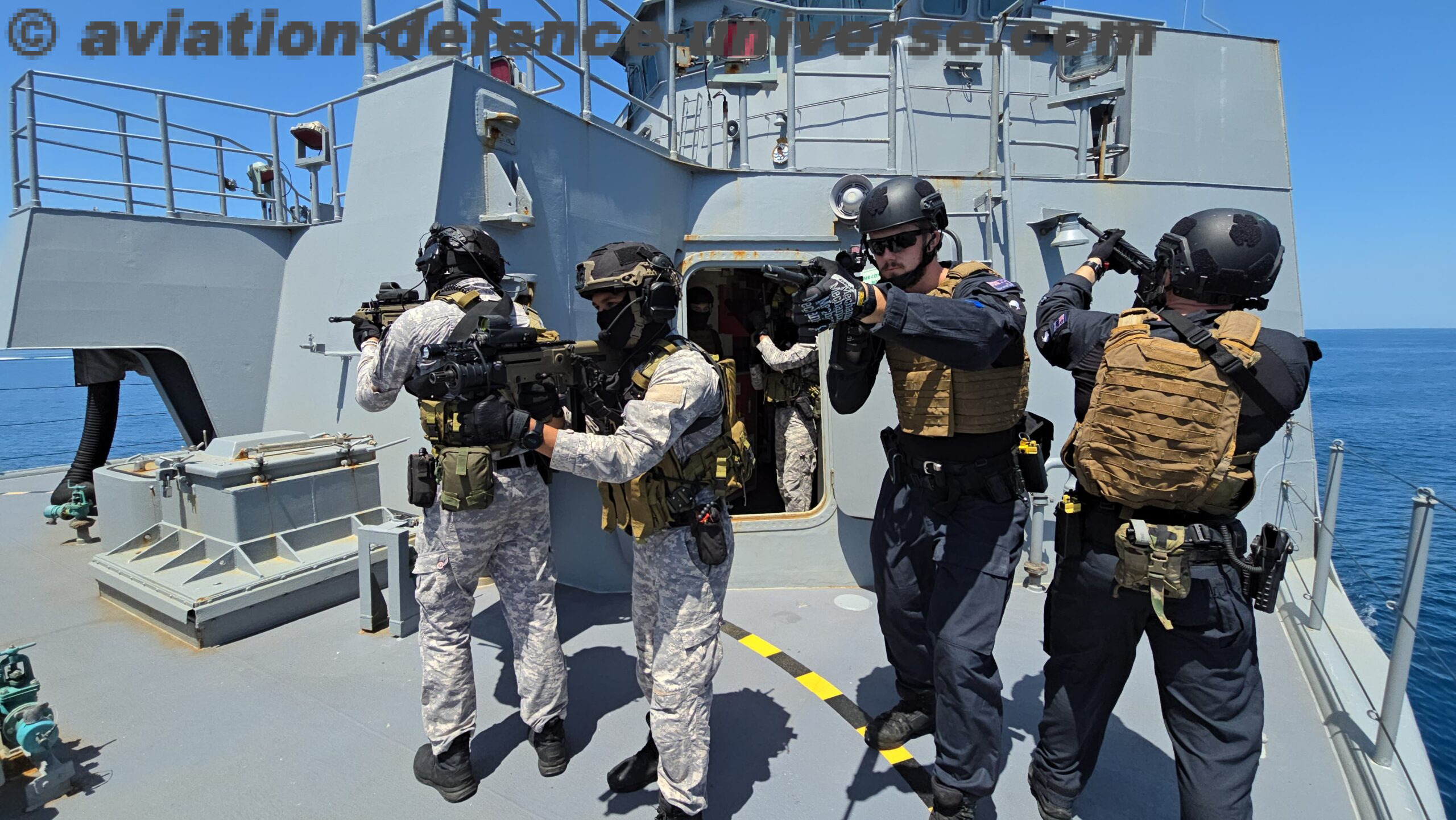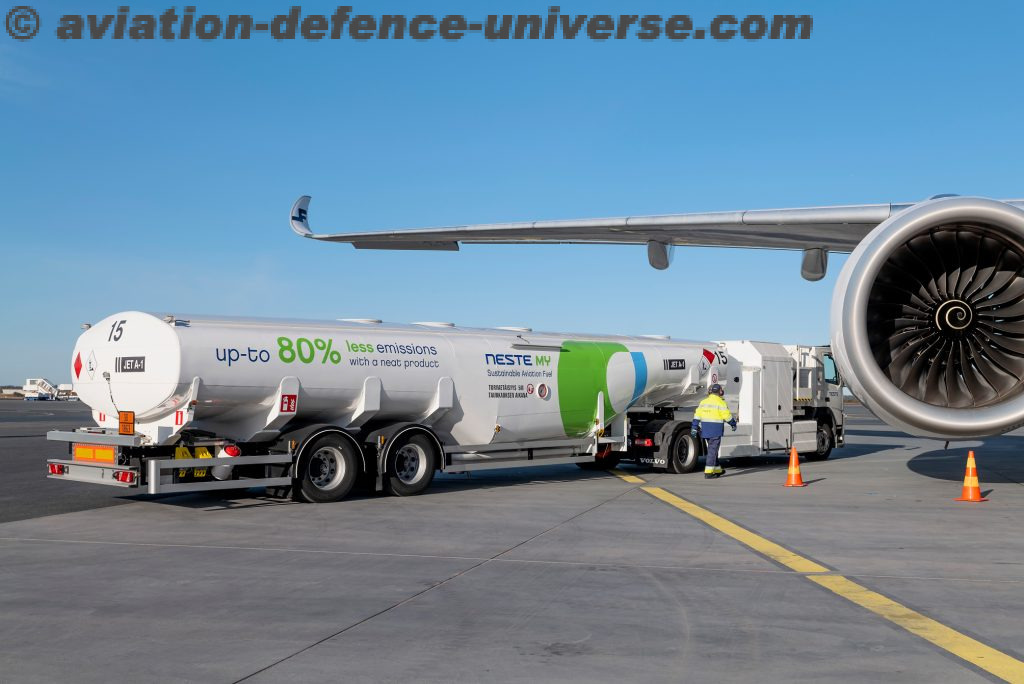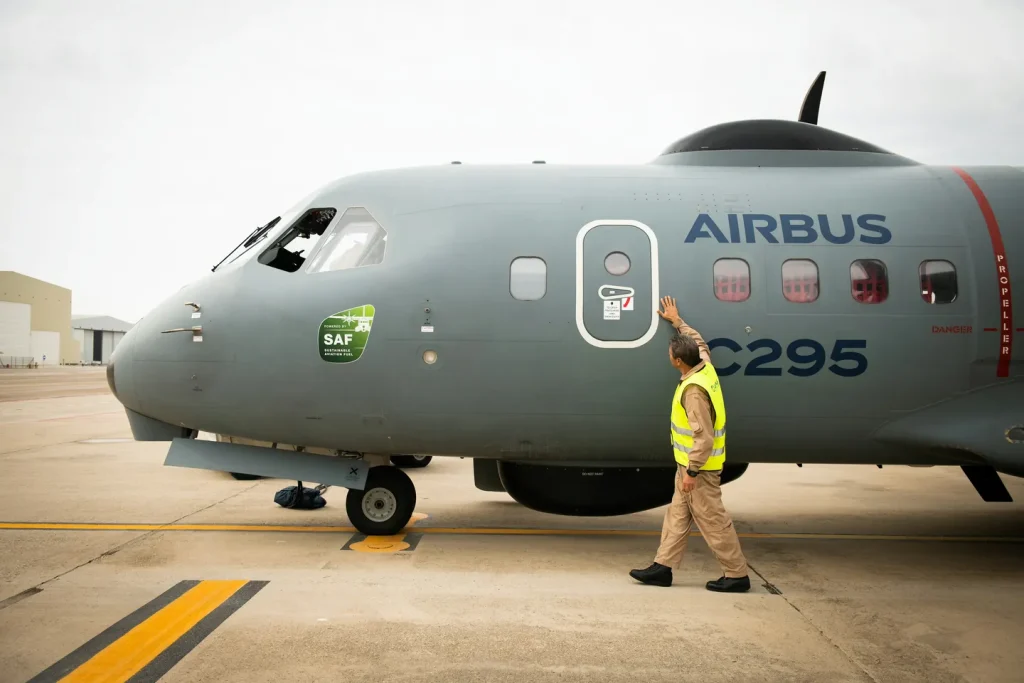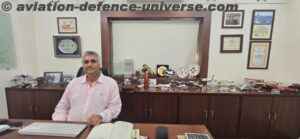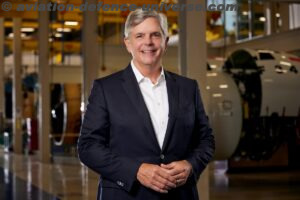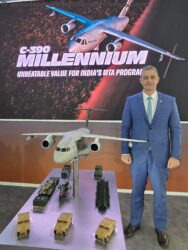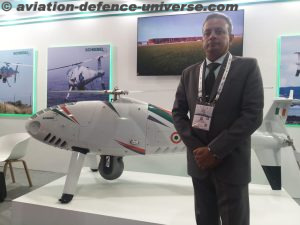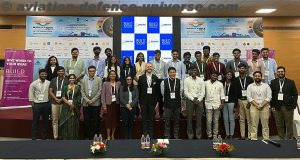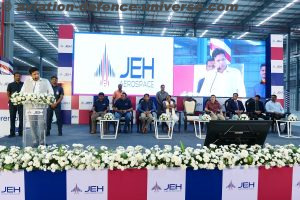Begumpet, Hyderabad. 24 January 2024. Airbus is confident that a significant part of decarbonising aviation will come from Sustainable Aviation Fuel (SAF). As a matter of fact, it had already set a target for itself: by 2023, the OEM wanted to have 10% pure SAF in it’s fuel mix. Ferry flights—in which an airline transports a newly delivered aircraft to its home base—should also be included. Customers taking delivery of aircraft in Toulouse or Hamburg can receive up to 5% pure SAF at no cost from Airbus. As SAF was the buzz word at the Indian Civil Aviation show at Hyderabad, ” India as a country is committed to sustainability and we are willing to work with our local partners in supporting them in their sustainability journey, ” stated Julien Manhes Head of SAF and Fuel Efficiency, Corporate Affairs at Airbus in an exclusive interview with Editor Sangeeta Saxena, ADU at Wings India 2024 recently.
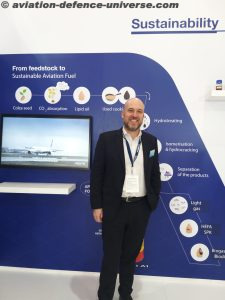 ADU. Julien, we are meeting here at the Wings India 2024. What is your impression of the show and do you envisage a big market coming out of this show?
ADU. Julien, we are meeting here at the Wings India 2024. What is your impression of the show and do you envisage a big market coming out of this show?
JM. Well, it’s a beautiful air show. I am impressed by the number of exhibitors. I am impressed by the number of visitors. And as always in India, I am impressed by the energy of people and the energy of the market. India is a growing market, it is a fabulous market, one full of potential. And we are very happy to be part of it.
ADU. And since you are the head of the sustainable part of the business, which is the biggest story in recent years emanating from all shows, how do you see that here?
JM. Well, sustainability is a topic that is common to all on the planet. We know that we need to do something. And at Airbus we decided that sustainability would be core to our business. Just to illustrate that, our company purpose since 2020 is to pioneer sustainable aerospace for a safe and united world. So from this purpose statement, you understand that we put sustainability at the center of what we do. And we believe that it’s for us the way for the industry to keep growing and to grow whilst reducing its impact on the environment. So India is no different. India is growing even faster than other markets. But India as a country is also committed to sustainability. So we are willing to work with our local partners in supporting them in their sustainability journey.
ADU. Which means is it a part of the manufacturing journey ? So for the common man, how do we define it? And what does Airbus actually do when it comes to sustainability?
JM. Sustainability is a very, very wide topic. But we like using what we call the three Ps approach. The first one is planet. So protecting the planet is an essential part of sustainability. And I’ll come to this in a moment. The other is protecting the people. So it’s making sure that the way we work all together is sustainable in the long term. And the third one, the third P is prosperity. Enabling prosperity. So all those three Ps are connected. At Airbus, we are deploying several initiatives to work on the three Ps as far as our operations are concerned. Just to illustrate that, we monitor today our carbon footprint when we produce aircraft. So we know how much CO2 we emit every year. And we are working on a decarbonization plan for our own CO2 footprint. And that’s why, for example, we use sustainable aviation fuels in our fleet of transport aircraft. We call them the Belugas. And they transport the parts from one side to the other. And the Belugas are using an increasing share of sustainable aviation fuel to reduce the carbon footprint of Airbus. So that’s one illustration.
 ADU. Have you also done some technological changes to the old Belugas to make them compatible to the sustainable aviation fuel?
ADU. Have you also done some technological changes to the old Belugas to make them compatible to the sustainable aviation fuel?
JM. No, we haven’t made any change because the beauty of sustainable aviation fuel is that it can be put in any aircraft or helicopter flying today with no change. The sustainable aviation fuel is aviation fuel. And as an aviation fuel, it goes into all aircraft of today with no change. So the Belugas were not changed. However, we now have a fleet of a more modern and a new generation of Belugas that replace the old Belugas that were less efficient.
ADU. And what about the plans for making the commercial aircraft compatible to the SAF?
JM. So as I said, today there’s nothing to be done on the aircraft. The aircraft is compatible to fly with 50% SAF already. So today you can fly the Belugas, you can fly the A350 of Air India which is out there with a blend of SAF up to 50% with no change. 50% of SAF and 50% of the routine ATF. The notion and we’ll see that later on in the panel, what we call sustainable aviation fuel is always a blend of a synthetic component together with a kerosene. And that blends the two together, they are what we call Jet A-1. Jet A-1 is a specification for a type of fuel. In Jet A-1 you can put in any aircraft from the A220 to the A380, Belugas, A350s. All aircraft fly on Jet A-1 so they can fly on SAF.
ADU. So at the end of the day it’s the airline’s choice?
JM. It’s more than the airline’s choice because now we’re entering into what is the most interesting but yet the most complex part of SAF which is the chicken and egg situation. Because the airlines are all for using more SAF but the airlines are saying there’s no SAF available on the market. The SAF producers are all for producing more SAF but they say well the airlines are not giving me enough certainty in the long term that they will be using that SAF. So we need to find the pump, we need to find ways for the producers to make the necessary investment to start producing SAF so that the airlines can use a growing share of SAF in their fuel.
ADU. Just for the common man’s benefit, when an airline goes to buy SAF or fill its tanks, is it the same company which is selling the ATF that will sell the sustainable fuel? Or are there going to be special companies who have come up and they are the ones who have exclusive rights to SAF?
JM. That’s a very interesting question and one which really, you know, the SAF market is nascent. So what you are describing, both options could happen, but what we see is a common interest from traditional producers to work on SAF as well as new entrants. So there is a new market that is building and what is for sure is that the fuel distributors, so the one that brings the fuel to the airlines, they want to be providing ATF as well as SAF. So the distributors are all for getting all sort of fuel to the airlines. The question is where do they procure it? So who is going to be producing it? That’s why we are talking to big national oil companies in all countries to start-ups because start-ups are also developing new ways of making SAF.
ADU. Has Airbus in India tied with academia for research and development in the field of sustainability?
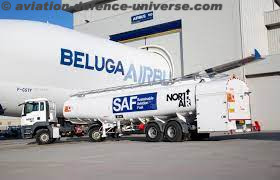 JM. That’s why we are very proud of saying that we have signed an MOU with the Indian Institute of Petroleum in supporting them in their research to do new, what I call, cooking recipes. Because you know, SAF is like soup. There are many, many ways of doing soup and there are soup recipes all over the world. They are all different, but in the end, it’s soup. SAF is the same. You could do SAF with all kinds of different feedstocks or ingredients and raw materials. And that’s why we want to be supporting the research and technology, the R&T on SAF because we need as many recipes as possible.
JM. That’s why we are very proud of saying that we have signed an MOU with the Indian Institute of Petroleum in supporting them in their research to do new, what I call, cooking recipes. Because you know, SAF is like soup. There are many, many ways of doing soup and there are soup recipes all over the world. They are all different, but in the end, it’s soup. SAF is the same. You could do SAF with all kinds of different feedstocks or ingredients and raw materials. And that’s why we want to be supporting the research and technology, the R&T on SAF because we need as many recipes as possible.
We are very proud of it because the Indian Institute of Petroleum is playing a key role locally in the research ecosystem around fuel. We are also contemplating and discussing with the broader ecosystem of fuel, but also with the airlines because we need to support the airlines in their SAF journey. Indigo, Air India are very much interested in looking at the sustainability aspect. But we are also talking with the regulator because we need the support of the government. We need the support of the government towards the airlines. And we need the support of the government towards the producers because in the end, you know, this chicken and egg situation is an economic equation. So we need the government to help the market to start building before it’s self-sufficient. So that’s what we are discussing with the government as well.
ADU. Is there something you’d like to add?
JM. I just thought it’d be nice to add something about why this part of the world is so primed for sustainable aviation. You’re right because it’s the first time for Wings India that we are displaying on our stand a booth dedicated to SAF. We’re not fuel producers. So why do we talk about SAF in India? Because we believe that India is in a unique position to become a major producer of SAF. So not only it has the potential to become one of the biggest aviation markets in the future, it could also become one of the biggest SAF producers in the world. Because India has a lot of biomass available and this biomass can be turned into SAF. So we are talking to the local fuel production ecosystem, so to the fuel producers of India in drawing their attention on the potential market that exists for domestic usage but also for international usage. So that’s why we believe that India has unique assets and a unique potential to become a major SAF producer in the future.


































